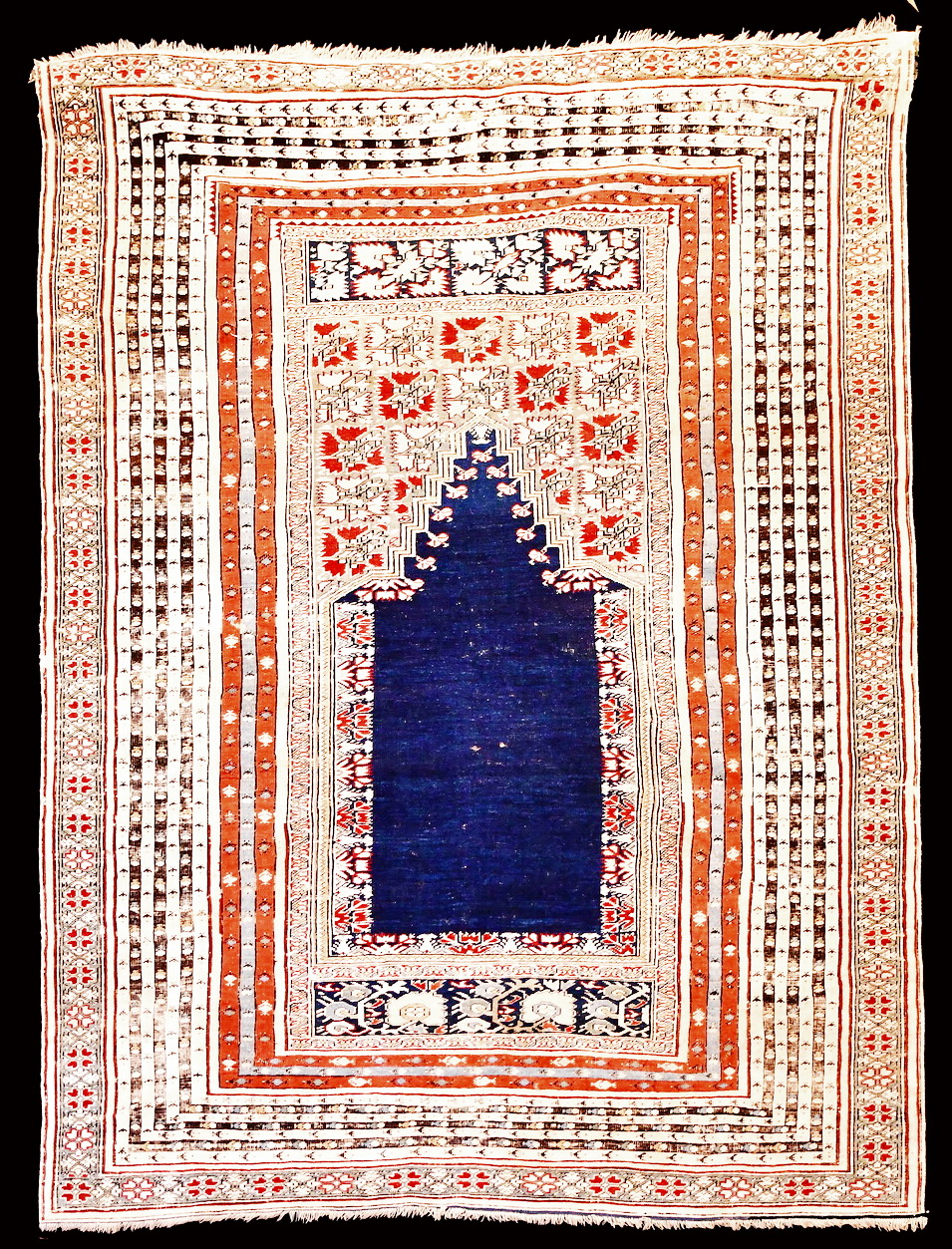
Name:
Prayer carpet "sajada"
Creation time:
Late 17th - first half of 18th century
Place of origin:
Giordes or Kula, Turkey
Material:
Wool (warp, weft and pile); pile weaving
Size:
190 сm х 130 сm
Inventory #:
357 БВ
Source origin:
From the Khanenkos' collection. Donated by Varvara Khanenko in 1918, nationalized by Bolshevik regime in 1919.
publications:
1. Bilenko, H. and Rudyck, H., Oriental Collection, guidebook, The Khanenko Museum, Kyiv: 2005. 2. Rudyk, H.,"Ottoman Collection in The Khanenko Museum" in Chronicles-2000, 1: 95, (2013): 479-495. 3. Rudyk, H., "Islamic art in the Khanenko Museum collection" in Islamic art in the museums of Ukraine, Proceedings of the Vyazmitina Research Seminar, 2017: 39-45.
expositions:
On permanent display in the Islamic art hall from 2006.
Section:
Ottoman art
Description
A highlight of the Khanenko Museum's Islamic collection is an Ottoman carpet dating to AD late 17th–first half of the 18th century. The carpet belongs to the traditional type of "sajada", or prayer, carpets, with composition based on a stylized picture of mihrab - a prayer niche in a mosque indicating the direction where Muslims turn during the prayer.
The composition and motifs of the carpet, particularly the central niche coloured in plain dark blue and crowned with arch of an acute stepped shape as well as a peculiar geometrized carnation pattern above and below the niche, suggest that the item was manufactured in workshops of Giordes or Kula, two leading centres of Turkish carpet-making in the 17th–18th centuries. Numerous narrow ornamental borders that fringe the central arch add a specific elegance to the piece of art.
Hanna Rudyk